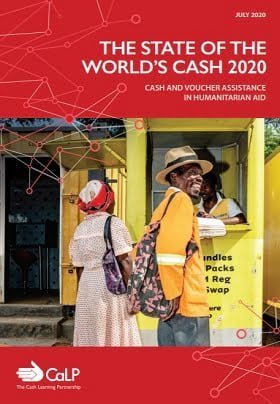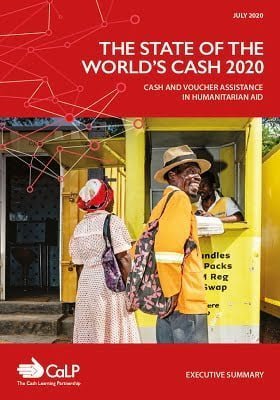State of the World’s Cash 2020 Chapter 3: Quality programming
WHO DEFINES QUALITY IN CVA?
The focus for improving cash and voucher assistance (CVA) has gradually shifted from increased scale, to improved quality and is now moving towards quality defined in terms of outcomes for recipients.

![]() Consensus is emerging among CVA actors on what constitutes quality in terms of effectiveness, efficiency, and accountability.
Consensus is emerging among CVA actors on what constitutes quality in terms of effectiveness, efficiency, and accountability.
![]() Aid recipients have different perspectives to humanitarian actors on what they value in aid.
Aid recipients have different perspectives to humanitarian actors on what they value in aid.
![]() Seeking and acting on feedback from CVA recipients and affected communities throughout the programme cycle can improve programme quality. The question is whether humanitarian actors are both willing, and able, to do this.
Seeking and acting on feedback from CVA recipients and affected communities throughout the programme cycle can improve programme quality. The question is whether humanitarian actors are both willing, and able, to do this.
![]() The focus must be on overall quality programming, not only quality CVA. Ensuring quality in CVA can be a catalyst or entry point for exploring ways to improve quality across responses.
The focus must be on overall quality programming, not only quality CVA. Ensuring quality in CVA can be a catalyst or entry point for exploring ways to improve quality across responses.
COLLABORATION FOR CASH ‘AT SCALE’
![]() The recognition that CVA implies changes in how humanitarian actors work together has driven more, new, and evolving approaches to collaboration. These include consortia, shared payment mechanisms, and efforts to increase the interoperability and integration of systems and processes.
The recognition that CVA implies changes in how humanitarian actors work together has driven more, new, and evolving approaches to collaboration. These include consortia, shared payment mechanisms, and efforts to increase the interoperability and integration of systems and processes.
![]() There is no ‘one size fits all’ approach, nor is there automatic ‘value for money’ in collaboration for cash at scale. Determining the right CVA operational model and what to invest in will depend on contextual factors including the type, duration, and complexity of a response.
There is no ‘one size fits all’ approach, nor is there automatic ‘value for money’ in collaboration for cash at scale. Determining the right CVA operational model and what to invest in will depend on contextual factors including the type, duration, and complexity of a response.
![]() There are trade-offs in quality when delivering cash at scale. It is necessary to understand where and when quality components (e.g. improved accountability) justify costs in the context of limited budgets.
There are trade-offs in quality when delivering cash at scale. It is necessary to understand where and when quality components (e.g. improved accountability) justify costs in the context of limited budgets.
![]() It is likely that the number of actors involved in the delivery of cash ‘at scale’ and end-to-end CVA programming will shrink. Other agencies will have important roles to play but need to be flexible and develop ‘added value niches’ that drive quality.
It is likely that the number of actors involved in the delivery of cash ‘at scale’ and end-to-end CVA programming will shrink. Other agencies will have important roles to play but need to be flexible and develop ‘added value niches’ that drive quality.
PRIORITY ACTIONS
- Operational agencies and donors should collaborate and share learning on operational models and agree on the benefits and limitations of different models in different contexts.
- Humanitarian actors should develop and use common metrics to assess effectiveness, efficiency, and accountability.
- Relevant humanitarian actors should collaborate to pilot systemic integration of an independent, people-centred approach to capture recipient perspectives, and independent MEAL functions at response level.
- Operational agencies, donors and researchers should generate evidence of the benefits and costs of ‘quality’ components such as third-party monitoring.
- Donors and operational agencies should acknowledge the trade-offs between quality and scale and agree on what is possible in different contexts.
- Donors should revise award guidelines to recognize and support components which foster quality programming, enabling agencies to develop specialized roles.
Project leads
Further reading

The State of the World’s Cash 2020 – Full report
Report
Since the first State of the World’s Cash report we have seen huge developments in cash and voucher assistance (CVA), with a continued increase in scale driving changing roles and partnerships, and a growing emphasis on quality. This new report, State of the World’s Cash 2020, examines progress, changes, and challenges in the use of CVA within the rapidly shifting humanitarian landscape...

The State of the World’s Cash 2020 – Executive summary
Report
The State of the World’s Cash 2020 provides a comprehensive snapshot of cash and voucher assistance (CVA), with significant recommendations for anyone interested in humanitarian action. This report follows on from the first report, a seminal piece, published in 2018. Since then CVA has continued to grow and is now a major part of almost every humanitarian response. The total amount of CVA...



